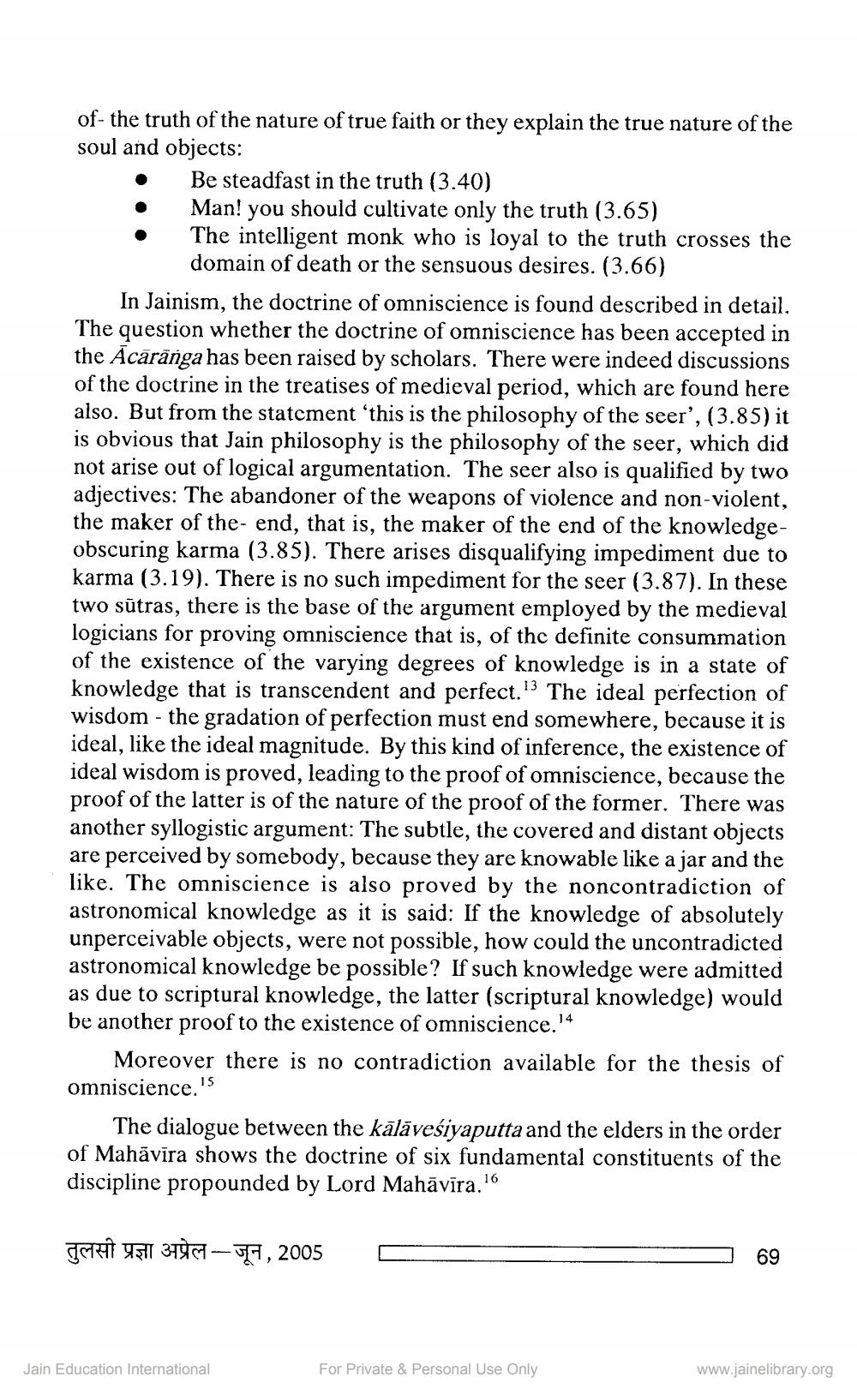________________
of-the truth of the nature of true faith or they explain the true nature of the soul and objects:
Be steadfast in the truth (3.40) Man! you should cultivate only the truth (3.65) The intelligent monk who is loyal to the truth crosses the
domain of death or the sensuous desires. (3.66) In Jainism, the doctrine of omniscience is found described in detail. The question whether the doctrine of omniscience has been accepted in the Acaränga has been raised by scholars. There were indeed discussions of the doctrine in the treatises of medieval period, which are found here also. But from the statement this is the philosophy of the seer', (3.85) it is obvious that Jain philosophy is the philosophy of the seer, which did not arise out of logical argumentation. The seer also is qualified by two adjectives: The abandoner of the weapons of violence and non-violent, the maker of the end, that is, the maker of the end of the knowledgeobscuring karma (3.85). There arises disqualifying impediment due to karma (3.19). There is no such impediment for the seer (3.87). In these two sūtras, there is the base of the argument employed by the medieval logicians for proving omniscience that is, of the definite consummation of the existence of the varying degrees of knowledge is in a state of knowledge that is transcendent and perfect. The ideal perfection of wisdom - the gradation of perfection must end somewhere, because it is ideal, like the ideal magnitude. By this kind of inference, the existence of ideal wisdom is proved, leading to the proof of omniscience, because the proof of the latter is of the nature of the proof of the former. There was another syllogistic argument: The subtle, the covered and distant objects are perceived by somebody, because they are knowable like a jar and the like. The omniscience is also proved by the noncontradiction of astronomical knowledge as it is said: If the knowledge of absolutely unperceivable objects, were not possible, how could the uncontradicted astronomical knowledge be possible? If such knowledge were admitted as due to scriptural knowledge, the latter (scriptural knowledge) would be another proof to the existence of omniscience.14
Moreover there is no contradiction available for the thesis of omniscience."
The dialogue between the kālāvesiyaputta and the elders in the order of Mahāvīra shows the doctrine of six fundamental constituents of the discipline propounded by Lord Mahāvīra.'
TERUT YFIT 37001 - 515, 2005
-
69
Jain Education International
For Private & Personal Use Only
www.jainelibrary.org




